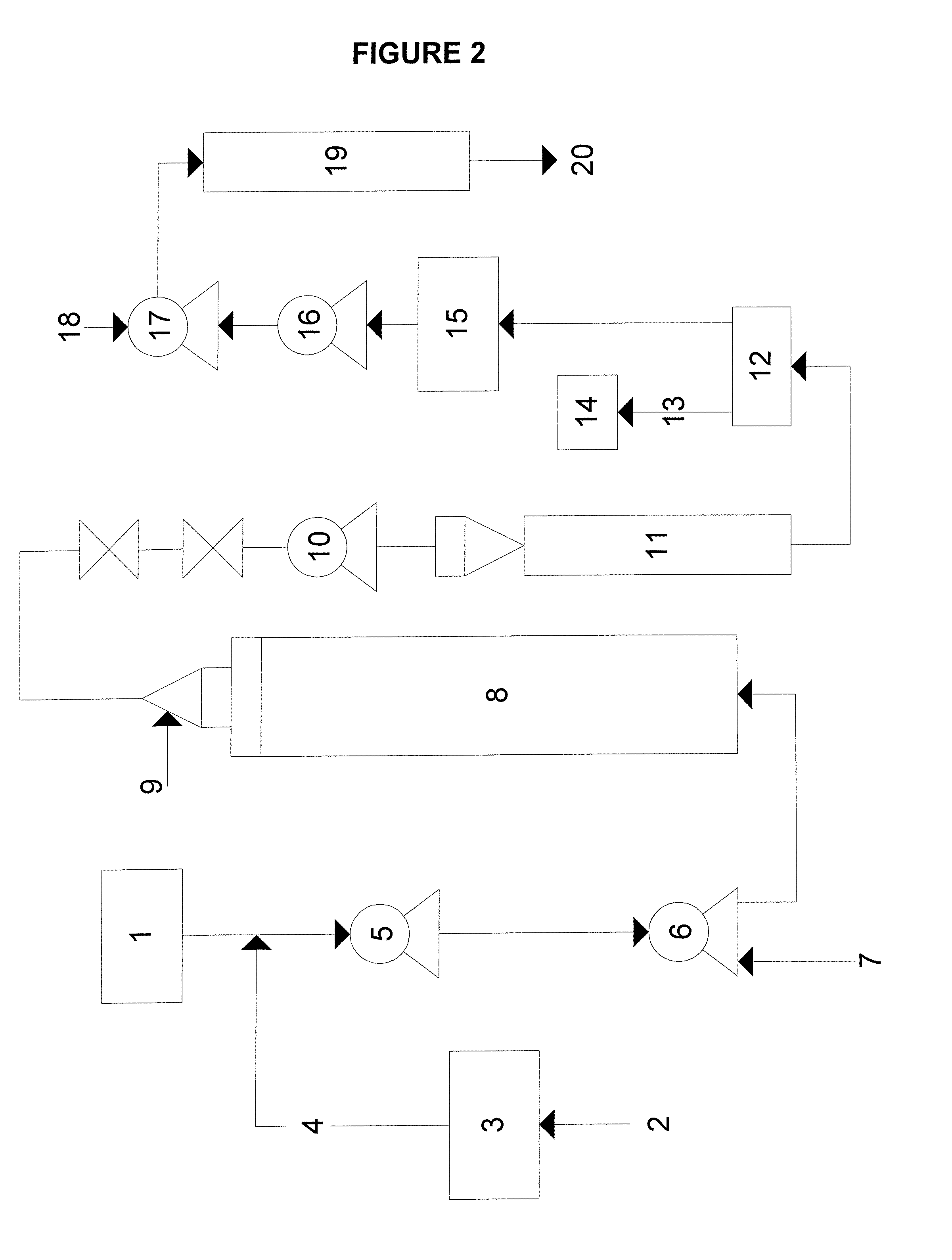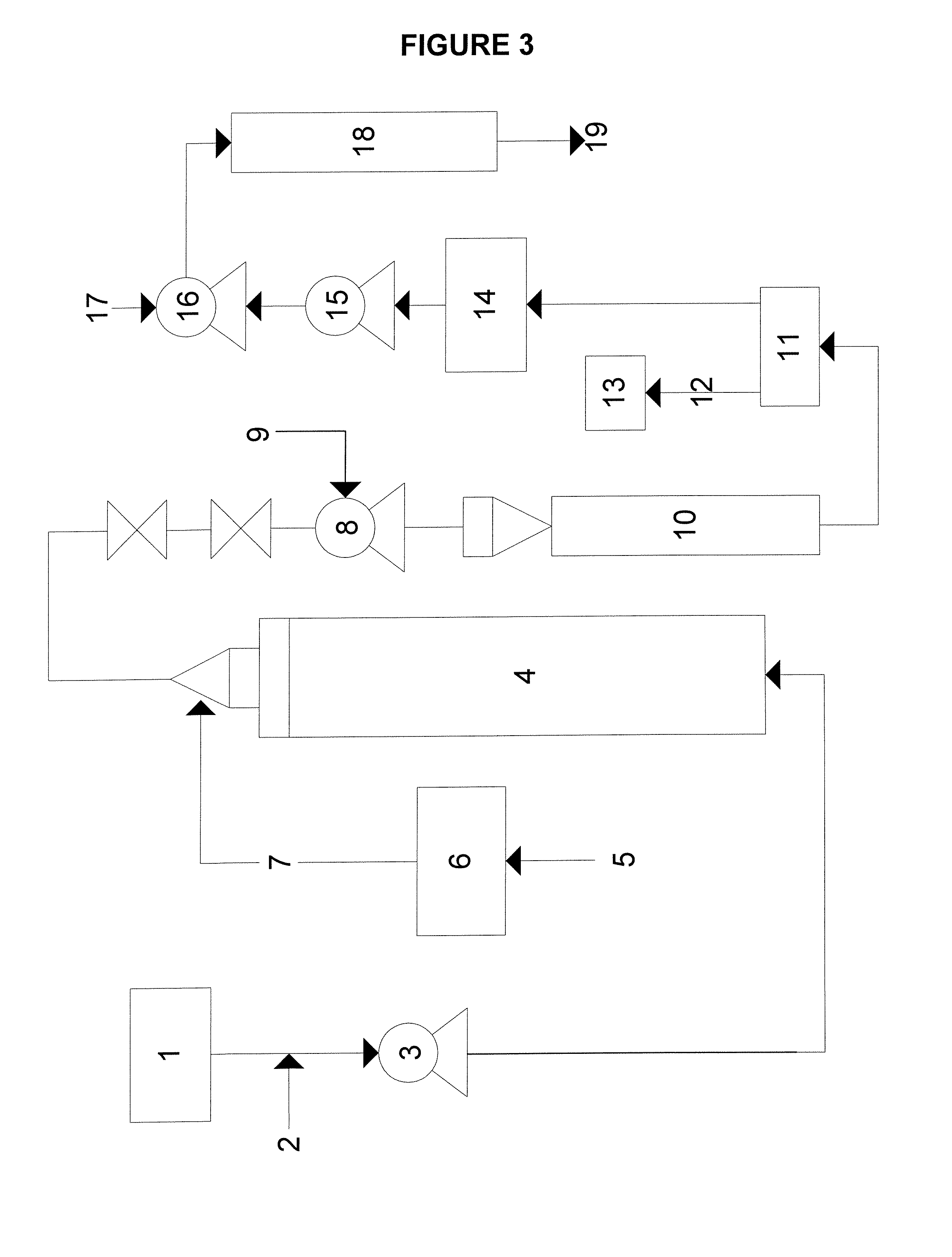Multi-step pulp bleaching
a pulp bleaching and multi-step technology, applied in the field of multi-step pulp bleaching, can solve the problems of affecting affecting the quality of pulp fibers used in the original production of waste paper products, and affecting the quality of pulp fibers used in the original production of those waste paper products, and affecting the quality of pulp fibers. the effect of premium virgin or premium recycled fibers
- Summary
- Abstract
- Description
- Claims
- Application Information
AI Technical Summary
Problems solved by technology
Method used
Image
Examples
example 1
[0074]The starting fibers in Example 1 were recycled cellulosic fibers collected prior to any bleaching step. The initial brightness of the recycled cellulosic fibers was 66.5 GE; the Kappa number of the recycled cellulosic fibers was 26.3; the delta a* of the recycled cellulosic fibers was 19.65. A description of the a* value and processes for determining that value are found in U.S. Published Patent Application Nos. 2004 / 0000383 and 2004 / 0079497, which are assigned to the assignee of this application and which are incorporated by reference herein in their entireties.
[0075]Those starting fibers were then bleached according to a conventional Eop / Y process. In particular, the fibers were bleached in a Quantum mixer under an alkaline peroxide step, with hydrogen peroxide as the alkaline peroxide agent, in conditions listed in Table 1 as “EOP Conditions.” The two 15-minute charges of oxygen at 60 PSIG involved pressurizing the quantum mixer to 60 PSIG for 15 minutes, relieving the mixe...
example 2
[0076]In Example 2, 0.3 grams of TAED powder (Clariant trade name PERACTIVE®-P) was added to a sample of the same starting recycled fibers used in Example 1. The fibers were then bleached using alkaline hydrogen peroxide under the EOP conditions listed in Example 1. The fibers were sampled after the first 15 minute oxygen charge and the fibers were measured to have a 74.7 GE brightness. After the second 15 minute oxygen charge, the fibers were measured to have a 76.4 GE brightness. The fibers were also tested and found to contain substantially no residual oxidant, indicating that bleaching was complete. The Eop / direct addition of TAED process of this Example 2 resulted in a larger brightness gain than the conventional Eop / Y bleaching process of Example 1.
example 3
[0077]In Example 3, an additional 0.5% hydrogen peroxide charge, at 10 lb / ton, was added to resulting fibers of Example 2 and retained under atmospheric pressure for two hours. The fibers surprisingly achieved a 78.5 GE brightness, or an additional 2.1 GE points over the resulting fibers from Example 2. The addition of hydrogen peroxide after complete bleaching, such as in Example 2, generally does not result in any significant brightness increase. However, this Eop / TAED+P process of Example 3 resulted in an unexpected additional brightness gain over the Eop / TAED process of Example 2, due to the continued bleaching effects of TAED in the presence of the additional hydrogen peroxide charge.
[0078]The fibers from this example contained 0.2 g / L, or approximately 0.2%, residual peroxide. That residual peroxide amounted to about 6% of the additional peroxide added, which is a good amount of consumption for a bleaching process.
PUM
| Property | Measurement | Unit |
|---|---|---|
| Temperature | aaaaa | aaaaa |
| Temperature | aaaaa | aaaaa |
| Percent by mass | aaaaa | aaaaa |
Abstract
Description
Claims
Application Information
 Login to View More
Login to View More - R&D
- Intellectual Property
- Life Sciences
- Materials
- Tech Scout
- Unparalleled Data Quality
- Higher Quality Content
- 60% Fewer Hallucinations
Browse by: Latest US Patents, China's latest patents, Technical Efficacy Thesaurus, Application Domain, Technology Topic, Popular Technical Reports.
© 2025 PatSnap. All rights reserved.Legal|Privacy policy|Modern Slavery Act Transparency Statement|Sitemap|About US| Contact US: help@patsnap.com



